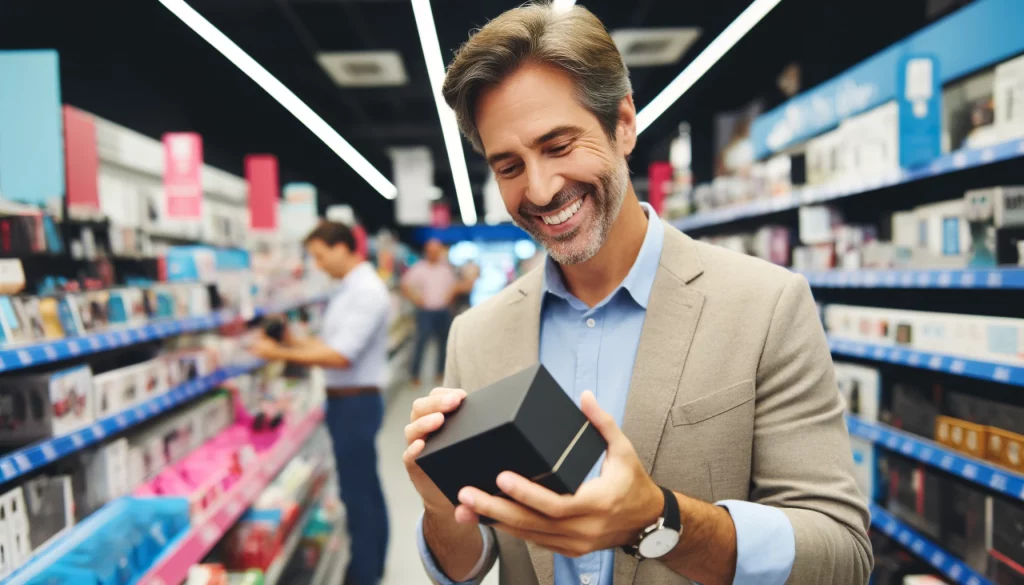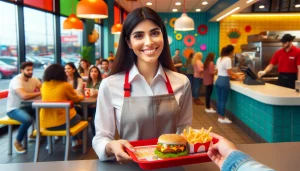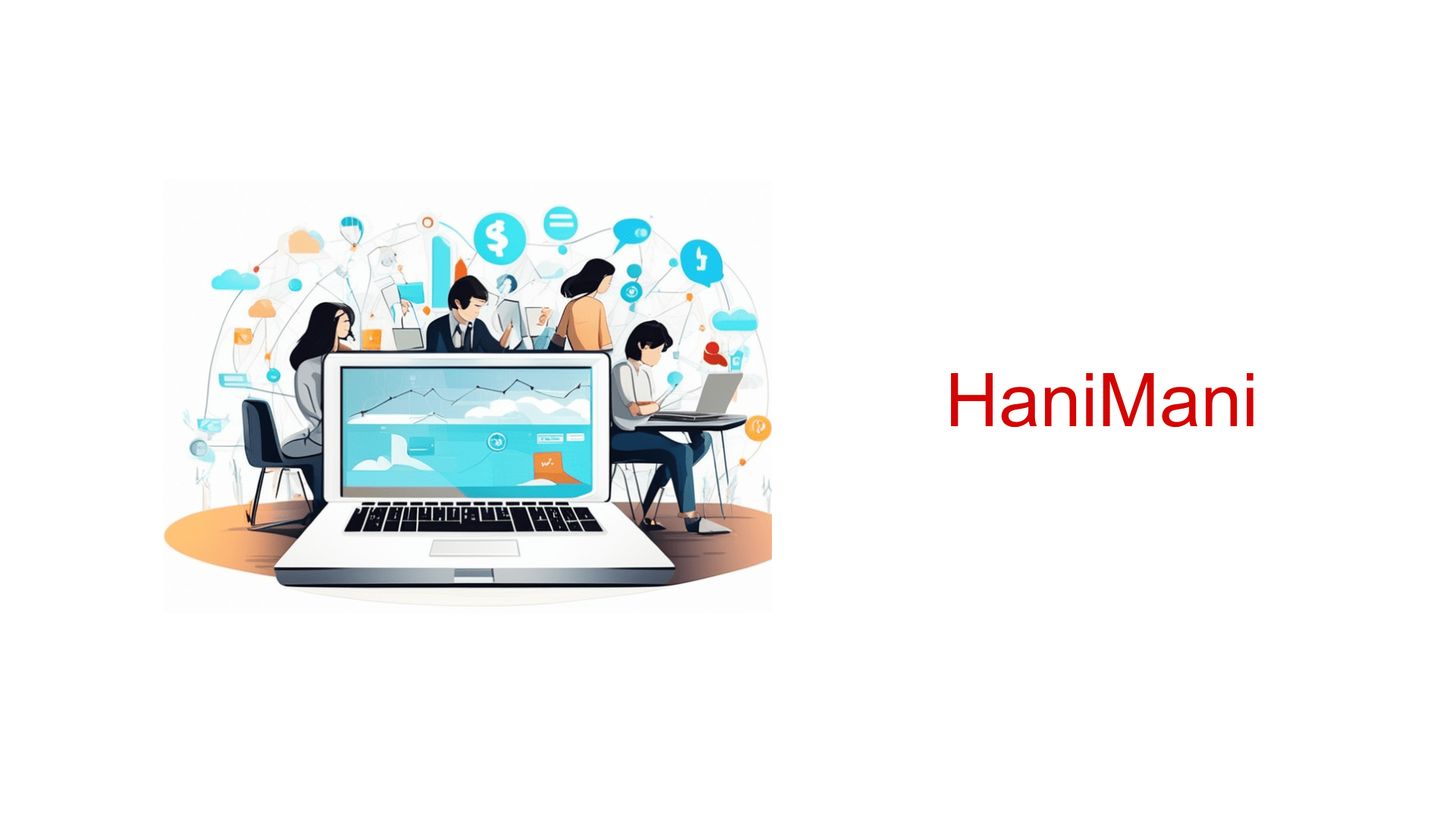Increasing customer loyalty: Growth strategies

What is customer loyalty
Customer loyalty refers to the likelihood that a customer will continue to purchase goods or favor a company over its competitors. It is defined by positive customer experiences, satisfaction with products and services, and the emotional connection customers feel towards a brand.
Customer loyalty is a key factor in business success, as it leads to repeat purchases, reduces customer acquisition costs, and often increases the long-term value of customers.
Here are a few key aspects that define customer loyalty, with examples and figures illustrating its importance.
Repeat purchases
One of the simplest indicators of customer loyalty is the frequency of repeat purchases. Loyal customers return to the same company for purchases rather than switching to competitors.
For example, Amazon has successfully mastered this method through its Prime program. Research has shown that Amazon Prime members spend an average of $1,400 per year, nearly twice as much as the $600 per year spent by non-Prime members.
This demonstrates high customer loyalty, driven by free shipping, special discounts, and other Prime benefits.
Referrals
Loyal customers are more likely to recommend a company to their friends and family, acting as brand ambassadors. Word-of-mouth referrals are a powerful tool, with 92% of consumers trusting recommendations from people they know.
For example, Dropbox significantly increased its user base by offering additional storage space to users who brought in their friends, effectively using customer loyalty to drive growth.
This program led to a steady 60% increase in the number of registrations, with a massive 35% of daily registrations coming from referral traffic.
Customer engagement
Engagement includes interactions between the customer and the company through various channels such as social media, forums, and support services. High levels of engagement often indicate strong customer loyalty.
For example, Harley-Davidson has cultivated a loyal customer base through active engagement via owner clubs and events, creating a community around the brand.
This community fosters deep emotional connections with the brand, stimulating ongoing loyalty and support.
Resistance to competition
Customer loyalty is also measured by how resistant customers are to competitors’ offers. Apple’s customer base is an example of this.
Despite often higher prices and strong competition, Apple enjoys exceptional loyalty, with a reported 92% retention rate among U.S. smartphone buyers.
Such loyalty is sustained through a combination of innovative products, a reliable ecosystem, and exceptional customer service.
Increased spending
Loyal customers typically spend more over time. Starbucks has achieved great success with its loyalty program, encouraging increased spending.
Participants in the Starbucks Rewards program not only visit stores more frequently than non-members but also spend more per visit.
The program has contributed to significant revenue growth for Starbucks, with loyalty program members accounting for about 40% of total U.S. sales.
Feedback and interaction
Loyal customers are more likely to provide valuable feedback that can be critical for continuous improvement and innovation. LEGO’s dedicated customer base actively participates in providing feedback through the LEGO Ideas platform, where customers can propose and vote on new product ideas.
This not only maintains customer interest but also ensures that LEGO products closely match the desires of their devoted customers.
Emotional connection
Perhaps the deepest aspect of customer loyalty is the emotional connection customers feel with a brand. This can be seen in brands like Nike, where customers feel a strong alignment with the brand’s message of inspiration and innovation in sports.
Nike leverages this connection through marketing and product personalization, deepening customer loyalty.
Customer loyalty encompasses a range of behavioral and attitudinal aspects, from repeat purchases and referrals to emotional connections and active engagement.
Companies that successfully cultivate customer loyalty can enjoy increased revenue, reduced marketing costs, and greater stability even in competitive markets.
Loyalty-building strategies include excellent customer service, consistent quality, engaging marketing strategies, and loyalty programs that reward customers for their preferences.
Why increase customer loyalty
Increasing customer loyalty is a strategic priority for companies across various industries because it can lead to increased profitability, sustainable revenue growth, and a competitive edge.
Here is a comprehensive look at why companies should focus on increasing customer loyalty, supported by real examples and significant statistics.
Reducing marketing costs
Acquiring a new customer can cost five times more than retaining an existing one. Loyal customers also help reduce marketing costs through word-of-mouth, which is free and highly effective.
For example, Sephora has leveraged customer loyalty through its Beauty Insider program, which encourages repeat purchases and word-of-mouth recommendations by offering exclusive rewards.
This has led to customers spending ten times more than non-loyal customers.
Increasing sales and revenue
Loyal customers are more likely to make purchases and spend more than new customers. They are already familiar with the brand and require less persuasion to make additional purchases.
A clothing store like Zara has succeeded by focusing on fashionable, rapidly changing collections, which have encouraged customers to visit stores more frequently.
The frequent introduction of new products can increase the number of visits by loyal customers, significantly boosting sales.
Increasing customer lifetime value
Customer Lifetime Value (CLV) represents the total revenue a business can reasonably expect from a single customer account over the duration of their relationship with the company. Increasing loyalty boosts CLV because loyal customers continue to make purchases over a longer period.
For example, Costco’s focus on high-quality products and exceptional customer service has led to a very high membership renewal rate, significantly increasing the CLV of its customers.
Stability in competitive markets
In competitive markets, customer loyalty can be a critical differentiator. When customers stick with a brand despite competitive alternatives, it provides a stable revenue base and reduces risks associated with market fluctuations.
A technology company like Dell has used customer service and reliable product quality to maintain loyalty in the competitive tech industry, helping stabilize its market position even during downturns.
Valuable feedback and innovation
Loyal customers are more engaged and often more willing to provide valuable feedback that can spur innovations and improvements. A software company like Autodesk encourages feedback from its long-term users, allowing it to shape product development and updates.
This, in turn, fosters further loyalty as customers feel valued and understood.
Brand advocacy
Loyal customers act as brand advocates, spreading positive word-of-mouth and influencing new customers in a way traditional advertising cannot match.
For example, Tesla has benefited greatly from the support of its customer base. Despite spending nothing on advertising, Tesla’s community of passionate customers and fans promotes its products through social media and blogs, stimulating more sales.
Buffer during crises
During economic downturns or other crises, loyal customers provide a revenue buffer. They are likely to stay with the brand due to their past positive experiences and the emotional connections they have built.
For example, during economic recessions, generic product brands typically retain a robust customer base, thanks to consistently low prices and loyalty built on a value proposition.
More efficient resource utilization
Focusing on loyal customers allows companies to allocate resources more effectively. Marketing efforts can be more targeted, and product development can be more aligned with the known preferences of repeat customers.
An example is The Home Depot, which focuses on DIY workshops and loyalty programs that cater to repeat customers, enhancing their experience and encouraging further loyalty.
Increasing customer loyalty offers numerous benefits, including reducing costs, increasing sales, and securing a strong competitive position. Companies that invest in understanding and improving customer loyalty are likely to see sustained success and are better equipped to navigate market challenges.
Loyalty-enhancing strategies include excellent customer service, loyalty programs, engaging customer experiences, and consistent communication that emphasizes the brand’s value to the customer.

Examples of companies with high customer loyalty
Building high customer loyalty is a strategic achievement, with some companies excelling in turning casual customers into passionate advocates who frequently return and purchase more products and services.
Here are examples of companies from various industries that have successfully cultivated high customer loyalty and explanations of how they achieved these strong relationships.
Trader Joe’s
Trader Joe’s, a unique chain of grocery stores, has built a remarkable level of customer loyalty through a combination of friendly service, unique product offerings, and a focus on high quality at low prices. Trader Joe’s offers a wide array of products, often organic or GMO-free, not found elsewhere.
Customer service is highly personalized, and the company culture is known for its eccentricity and fun, making customers feel like part of an exclusive club. The result is a loyal customer base that not only continues to return but also enthusiastically promotes the brand.
Chick-fil-A
Chick-fil-A has stood out in the fast-food industry by combining quality food with exceptional customer service. Known for its polite staff and the phrase “My pleasure,” Chick-fil-A employees often go beyond the call of duty in customer service, a key factor in high customer satisfaction ratings.
The company also invests significantly in training and employee satisfaction, which translates to better customer service. Chick-fil-A has one of the highest loyalty and satisfaction ratings in the fast-food sector, contributing to sustainable sales growth.
USAA
USAA (United Services Automobile Association) offers insurance, banking, and financial services primarily to people and families who serve or have served in the United States Armed Forces.
By focusing on a specific audience—military members and their families—and understanding their unique needs, USAA has achieved an exceptionally high level of customer loyalty.
They offer services such as free checking accounts, favorable loan rates, and discounts on bundled insurance. Moreover, customer service is consistently rated highly for responsiveness and helpfulness, which helps maintain a loyal customer base.
Patagonia
Patagonia, a designer of clothing and gear for outdoor activities, has cultivated customer loyalty through its strong environmental and social principles.
The company’s commitment to sustainability, including the use of recycled materials in its products and donating a percentage of its profits to environmental causes, deeply resonates with its customers, who are often outdoor enthusiasts.
A shared system of values creates a strong emotional bond, encouraging customers to remain loyal and promote the brand to others who share similar values.
T-Mobile
T-Mobile disrupted the US mobile carrier market with its “Un-carrier” strategy, which focuses on simplifying pricing and offering customer-friendly policies such as no contract commitments, unlimited data plans, and transparent pricing.
These initiatives, along with an aggressive marketing strategy and improvements in service quality and network coverage, have brought T-Mobile a very loyal customer base. Their NPS scores and satisfaction levels are among the highest in the industry.
L.L.Bean
L.L.Bean, a retail store known for quality clothing and outdoor gear, has built customer loyalty through a combination of high-quality products and a legendary return policy, which historically allowed customers to return any item at any time.
Although they have modified this policy, the brand is still associated with customer satisfaction and reliability. Their focus on customer service and the quality of their products contributes to a high level of customer loyalty, with many being lifelong buyers.
Each of these companies is an example of different strategies for building customer loyalty, from exceptional service and unique product offerings to ethical business practices and customer-oriented policies.
By closely following customer expectations and values, these companies retain their customer bases and encourage enthusiastic brand advocacy.
Business facts about increasing customer loyalty
Profitability increase through repeat purchases
Customers who are loyal to a brand are more likely to make repeat purchases, significantly enhancing profitability. Bain & Company reported that increasing customer retention rates by 5% increases profits by 25% to 95%.
For example, Adobe transitioned from selling packaged software to a subscription model, stimulating customer retention through continuous updates and cloud services.
The shift not only stabilized revenue streams but also significantly increased annual revenue as customers were retained over a longer term.
Cost reduction through customer retention
Acquiring a new customer costs 5 to 25 times more than retaining an existing one. A loyal customer base reduces the need and costs associated with attracting new customers.
Volvo has successfully used safety as a unique competitive advantage to maintain high levels of customer retention. The focus on safety and reliability attracts and retains customers who value these features, reducing Volvo’s need for large expenditures to attract new customers.
Revenue growth through upselling and cross-selling
Loyal customers are more open to purchasing additional products or upgrading existing ones. According to research by Marketing Metrics, the likelihood of selling to an existing customer is 60-70%, while the likelihood of selling to a new customer is only 5-20%.
For example, Hilton Hotels uses its loyalty program to offer personalized promotions, room upgrades, and other benefits, which not only enhance guest satisfaction but also increase spending on accommodations.
Competitive advantage through superior customer experience
Providing an excellent customer experience can create a significant competitive advantage. A Walker study suggests that by the end of 2020, customer experience will have overtaken price and product as the key brand differentiator.
As an example, Hyundai offers one of the best warranties in the automotive industry, including a 10-year/100,000-mile warranty on the engine and transmission, which has significantly enhanced its reputation for customer care and reliability, leading to increased customer loyalty and a competitive edge in the market.
Brand advocacy created by customer loyalty
Loyal customers often become advocates for the brand, promoting it through word-of-mouth, which is perceived as more reliable than traditional advertising. According to Nielsen, 92% of consumers believe recommendations from friends and family over advertising.
REI, a retail seller of outdoor goods, fosters loyalty and advocacy through community involvement and sustainability practices, which resonate well with customers. This approach encourages them to share their positive experiences and promote the brand.
Increased customer feedback and opportunities for innovation
Loyal customers are more engaged and often provide valuable feedback that can lead to improvements in products or services. Intuit, for example, uses customer feedback to continuously enhance its financial and accounting software.
This response to customer needs not only improves the product but also strengthens customer loyalty as they see their suggestions implemented.
Financial stability and reduced volatility
A stable base of loyal customers provides predictable revenue streams and reduces business volatility. Buffer, a company that offers tools for social media, has created a loyal customer base by offering transparent pricing and exceptional customer support.
Loyalty translates into stable recurring revenues, allowing for better financial planning and reduced income fluctuations.
Increasing customer loyalty is beneficial for increasing profits, reducing costs, achieving competitive advantages, encouraging brand advocacy, improving products and services through customer feedback, and stabilizing revenues.
Successful companies invest in understanding and satisfying the needs of their customers and continuously strive to provide value that strengthens loyalty.

Errors in boosting customer loyalty
Increasing loyalty is a strategic goal for many companies. They aim to improve satisfaction and retain customers.
However, this process is fraught with potential pitfalls. Understanding these can help companies effectively create a more loyal customer base.
Excessive dependence on discounts and promotions
While discounts and promotions can initially attract customers, an excessive reliance on them will lead to brand depreciation and make loyalty dependent on price rather than quality or service.
For instance, J.C. Penney’s attempt to switch to a strategy of consistently low prices led to significant negative reactions from customers. They were accustomed to regular discounts, which ultimately damaged loyalty and forced a return to the previous strategy.
Neglecting customer feedback
Ignoring feedback is a serious mistake. Customers who take the time to write reviews expect to be heard.
Inactive responses to this feedback can lead to dissatisfaction and loss of loyalty. A notable case involved a major airline.
It failed to respond to consistent feedback about reduced seat comfort and increased baggage fees. This led to decreased passenger loyalty and negative press coverage.
Inconsistent customer experience
Consistency in customer experience is key to building loyalty. A company that provides excellent service one day and poor service the next will struggle to retain customers.
A regional bank encountered these issues when discrepancies in service quality between online and offline experiences led to customer frustration and decreased loyalty. It became clear that consistency was necessary across all channels.
Insufficient understanding of customer needs
Companies often assume they know what their customers want without conducting sufficient research. Such behavior can lead to misguided loyalty programs or product features that do not meet the target audience’s needs.
For example, a fast-food chain introduced a new line of healthy options without properly researching the demand for such offerings in their regions. This decision led to low sales and a waste of resources.
Impersonal customer experience
In today’s market, personalization is crucial. A generic experience can make customers feel undervalued.
Whereas personalized interactions significantly enhance loyalty. An example of such a mistake was when a large retail chain sent mass marketing emails without segmenting the customer base.
Engagement metrics dropped, and there were unsubscribes due to a feeling of irrelevance.
Unsuccessful implementation of loyalty programs
A loyalty program must be simple to understand and truly motivating to be effective.
Complex bonus systems or unattainable rewards can irritate customers. A health and beauty retail chain introduced a loyalty program that was too complex for customers to understand.
With various levels and points that expired too quickly, such complexity led to low activation and criticism from the customer base.
Neglecting employee engagement
Employee behavior directly impacts customer loyalty. A lack of interest in work is less likely to result in a level of service that fosters loyalty.
A technology company overlooked this aspect. It inadequately trained its support staff, leading to poor customer service quality and decreased satisfaction and loyalty.
Lack of a clear brand promise
If customers do not clearly understand what a brand stands for, they are less likely to become loyal. A retail store experienced a decline in customer loyalty after a series of marketing campaigns.
These mixed different messages and styles. This confused customers regarding the brand identity and its core values.
Avoiding these mistakes requires listening to and understanding customers, ensuring consistency in service delivery.
Also, personalizing interactions with customers, simplifying loyalty programs, and aligning employee goals with customer satisfaction.
Thus, companies can develop stronger relationships with customers. This leads to higher loyalty and improved business outcomes.
Customer loyalty enhancement checklist
Understanding your customers
Invest time in fully understanding the needs of your target audience. Use customer feedback, surveys, and data analytics.
This can provide valuable insights into their behavior and expectations.

Personalizing the experience
Tailor your products, services, and marketing efforts to meet the individual needs of your customers. Use customer data to offer personalized recommendations, promotions, and communication.
Such a decision fosters a sense of exclusivity and relevance.
Providing exceptional customer service
Prioritize exceptional customer service at all stages of interaction. Train your staff to provide prompt, friendly, and solution-oriented assistance.
Ensure a flawless and enjoyable customer experience.
Building trust and transparency
Foster trust and transparency by being honest, reliable, and open in your interactions with customers. Communicate openly about your products, policies, and processes.
This behavior promotes a sense of confidence and integrity.
Rewarding loyalty
Implement a robust loyalty program. Encourage repeat purchases and engagement.
Offer rewards, discounts, and exclusive bonuses to buyers. Recognize and appreciate their continued support.
Fostering engagement and community building
Create opportunities for interaction with customers and community building. Facilitate meaningful connections through social media, forums, events, and interactive experiences.
Develop a sense of belonging and camaraderie.
Requesting and acting on feedback
Encourage feedback from customers and actively listen to their suggestions, concerns, and experiences. Use it to identify areas for improvement and innovation.
Demonstrate your commitment to customer satisfaction and continuous improvement.
Monitoring and analyzing metrics
Track key performance indicators related to customer loyalty, such as retention rates, Net Promoter Score (NPS), and customer lifetime value.
Analyze trends and patterns to identify strengths and opportunities for improvement.
Adapting and evolving
Be flexible and responsive to the changing market dynamics and customer preferences. Continuously innovate and develop your strategies and offerings.
Such a decision allows you to stay ahead and maintain relevance in the eyes of your customers.
Promoting a customer-oriented culture
Instill a customer-oriented mindset and culture throughout your organization. Ensure that every employee understands the importance of customer loyalty and their role in its development and maintenance.
By strictly following this checklist, you not only develop a loyal customer base but also strengthen your business’s position for sustainable growth and long-term success.
Remember that creating customer loyalty is an ongoing journey. It requires dedication, innovation, and a relentless drive to exceed customer expectations.
Automated posting of reviews about your business on GINIX – get support for your business, thanks to positive reviews and create an impressive online reputation.
We handle all the setup – you get more reviews.

 18 min
18 min 










